The global construction equipment industry is booming due to increased construction activities, including infrastructure developments and urbanization. Loaders and excavators are two of the most important earth-moving equipment in this industry, as they help improve operational efficiency and productivity.
This guide will give a rundown of loaders and excavators focusing on their various applications, and then highlighting their key differences. This will help potential buyers to ensure they find the right machine for their needs.
Table of Contents
Loaders’ market size and potential
Excavators’ market size and potential
Different types of loaders and excavators in the market
Functional differences between loaders and excavators
Conclusion
Loaders’ market size and potential
The growth recorded in the construction and mining industries has increased loader demand. This is evidenced in the loaders’ global market value, estimated at US$ 31.70 billion in 2021 and projected to reach US$ 43.21 billion by 2029, growing at a compound annual growth rate (CAGR) of 3.95%.
The various factors driving the rapid market growth and global demand for loaders include:
- Increased global mining and building activities
- Automation, resulting in improved efficiency and productivity, and reduced accidents at job sites
- Increased access to loaders for hire, facilitating the growth of SMEs in the construction and mining industries.
Excavators’ market size and potential
The global excavator market has been experiencing significant growth, mainly due to increased construction activities. It was valued at US$ 70.65 billion in 2022 and is projected to grow at a CAGR of 5.2% between 2023 and 2030.
Various factors driving this global excavators market growth include:
- Increased investments in the construction sector, especially in developing countries such as India, China, and South Korea
- Increased investments in large-scale projects like oil and gas, mining, and road and port construction
- Adoption of automated excavators, which reduces operational costs and increases productivity.
Different types of loaders and excavators in the market
Loaders and excavators are indispensable heavy machines used for efficient material handling and earthmoving tasks in multiple industries. There are different types of these pieces of equipment in the market.
Loaders
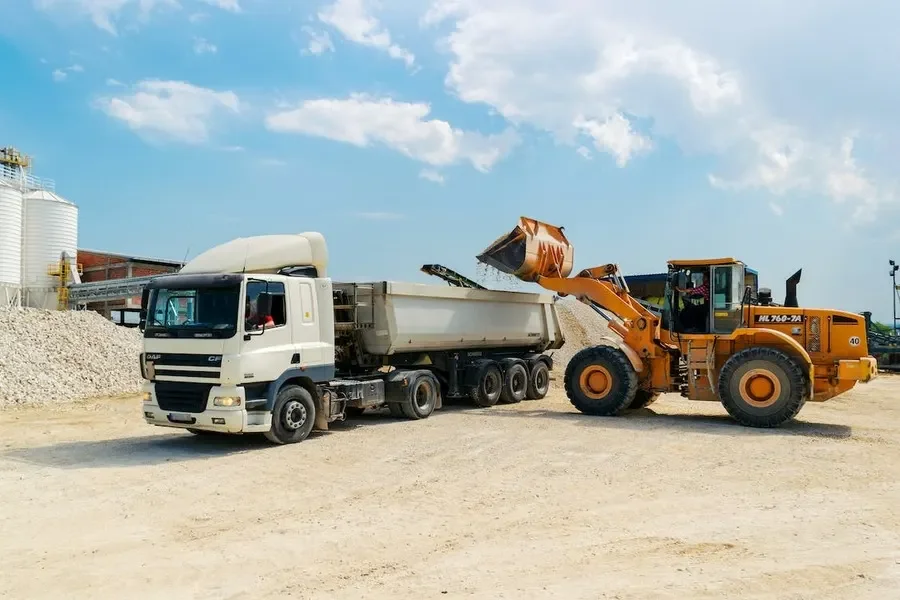
Loaders are a type of heavy machinery used in industries such as construction, mining, and agriculture. They are often used to load, transport, and unload materials such as soil, gravel, sand, and other loose materials.
Loaders are characterized by multiple key features, such as:
- Bucket at the front
- Boom and arms
- Operator cab
- Attachments such as forks, grapples, and snowplows
1) Backhoe loader

Features
- Loader bucket with capacity ranging from 1 to 1.3 cubic yards
- Backhoe attachment comprising the boom, stick, and bucket that can dig up to 21 feet
- Four-wheel drive for enhanced traction and maneuverability
- Operator cabin
Pros
- Highly versatile
- Relatively compact size compared to other heavy machines
- Combines loader and backhoe capabilities to increase productivity at the job site
Cons
- Shorter reach and digging depths compared to dedicated excavators
- Requires high skills and experience since operations involve simultaneous control of various attachments and functions
2) Skid steer
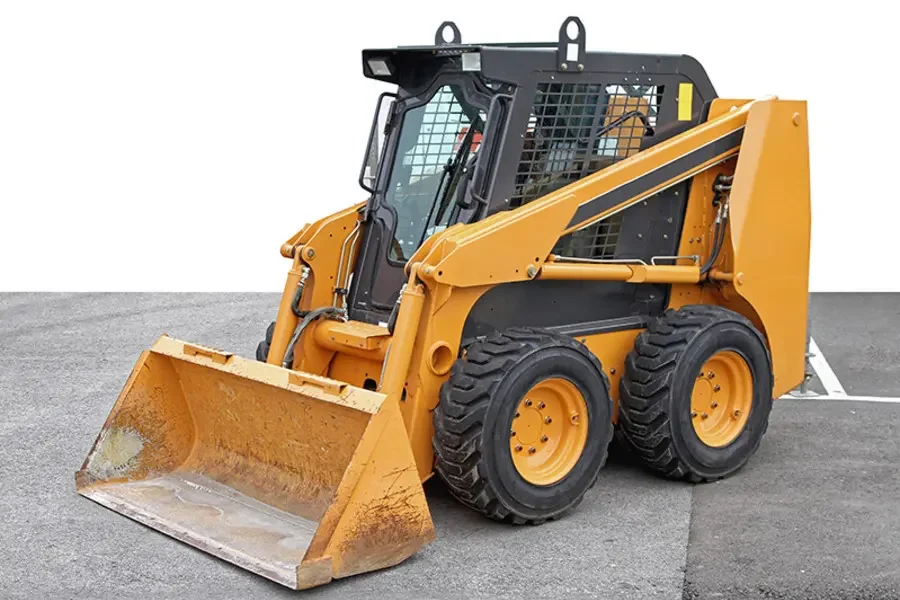
Features
- Comes with multiple attachments, such as forks, buckets, augers, trencher, grapple, brush cutters, snow blades, and sweeper
- Counter-rotating wheels or tracks operating at zero-turn radius
- Lift arms
- Operator cab
Pros
- High versatility
- Easy to transport to and from job sites due to their compact size and lightweight
- Can access areas inaccessible with larger machines, such as narrow construction sites, indoor spaces, and residential yards
Cons
- Lower lifting capacities
- Less stable in uneven or sloping terrains
3) Wheel loader

Features
- Wheel loaders have large, front-mounted buckets with a capacity ranging from 6 to 12 meters
- Fitted with multiple attachments, including forks, grapples, snowplows, and brooms
- High lifting capacity since they are designed to handle heavy loads
- Operator cabin
- An articulated steering system, which supports independent pivoting of the front and rear axles
Pros
- High productivity and efficiency in material handling
- Different attachments facilitate their application in various industries for tasks such as loading, digging, lifting, grading, and snow removal
- Their large, wide tires provide superior traction on different surfaces
Cons
- Higher purchasing and maintenance costs and fuel consumption
- Wheel loaders have limited maneuverability compared to skid steers or compact loaders.
Excavators
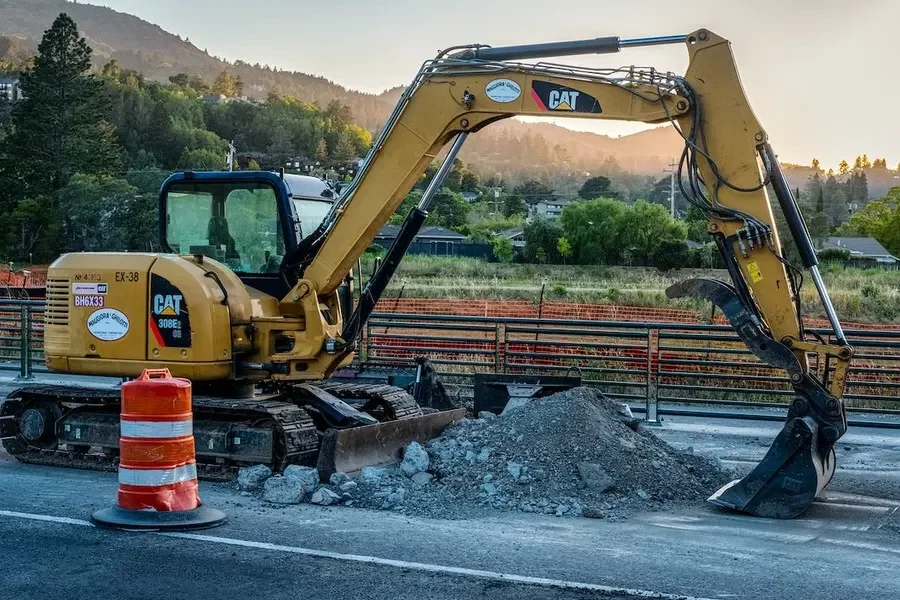
Excavators are heavy machinery used for digging, excavating, and earthmoving functions. They are commonly used in industries such as construction, mining, landscaping, and demolitions
Excavators’ main key features are:
- Boom
- Stick/arm
- Bucket
- A rotating platform
- Wheels/tracks
- Operator cab
1) Crawler excavators
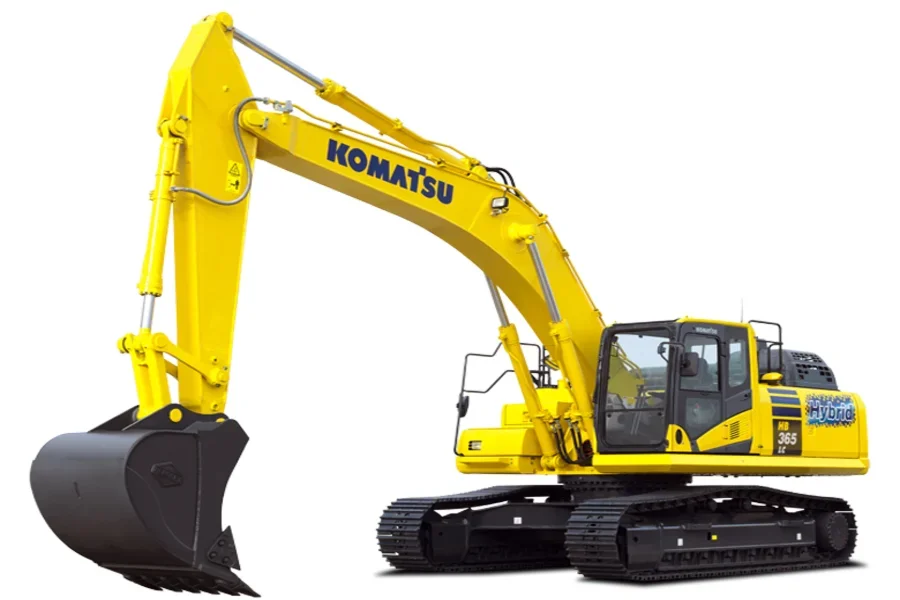
Features
- Crawler excavators are equipped with tracks instead of wheels, which increase stability, maneuverability, and traction
- A hydraulic system that powers the movements of the boom, arm, and bucket
- Flexible reach and digging depth due to unique boom and arm configurations, such as mono boom or articulated boom
- An operator cabin
Pros
- High stability, which enables them to work on steep slopes and rough terrains
- Powerful digging capabilities, making them a better choice for large-scale projects
- Higher lifting capacity compared to other excavators
Cons
- Higher purchasing costs compared to other smaller and compact excavators
- Limited movement and lower speed, especially on hard, paved surfaces
2) Dragline excavators
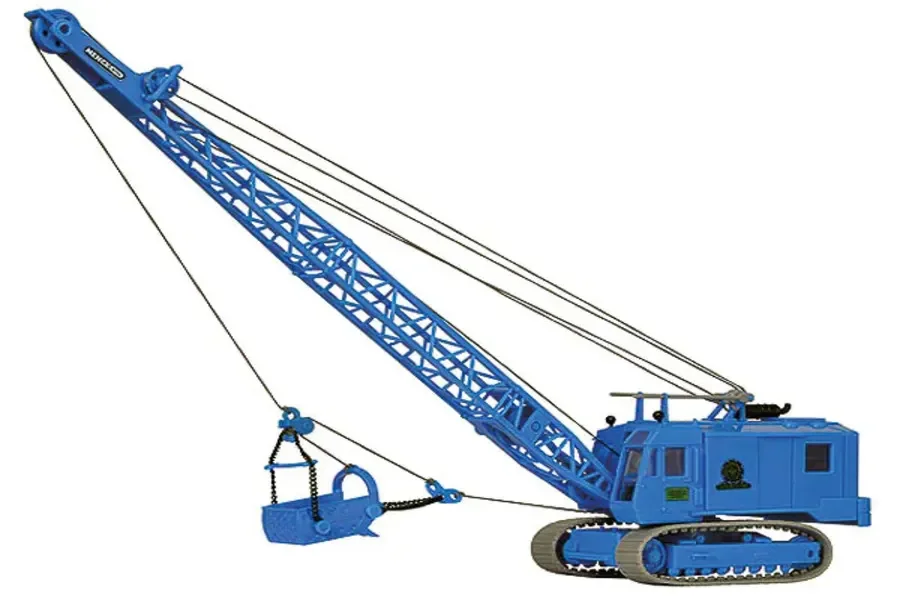
Features
Dragline excavators are designed to handle heavy loads requiring deep digging and extensive material movement. Thus, they are equipped with features such as:
- A counterweight system to provide stability and balance during operations
- Lifting cables are used to attach a scoop or shovel to the equipment, providing a range of action and load
- A machine body fitted with engines and an operator’s cabin
- A drag wire connecting the shovel to the machine body and used to adjust or control the shovel’s movements
Pros
- Large, powerful draglines excel in deep digging operations of up to a depth of 80 meters
- Dragline shovels can have a capacity of up to 120 m3, increasing their reach, digging, and lifting capacities
- Efficient material movement capabilities through the dragline operation method
Cons
- Their size and reach limit their mobility and usability in confined or narrow job sites
- High acquisition and maintenance costs due to their specialized components
- Dragline excavators’ design and operation method slows their speed, making them ineffective for time-sensitive projects
3) Wheeled excavators
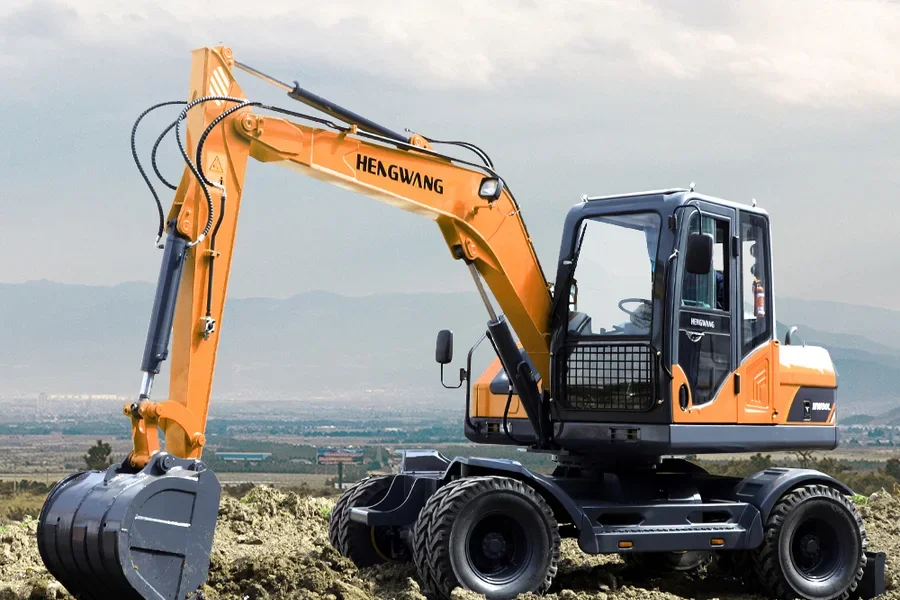
Features
- Equipped with wheels instead of tracks
- Articulated chassis, which results in efficient navigation in tight spaces and corners
- Flexibility in reach and digging depth due to unique boom and arm configurations
Pros
- The wheels increase mobility and maneuverability
- Wheeled excavators are faster than tracked excavators
- High mobility
Cons
- Less stable than tracked excavators
- Higher operating costs since they require frequent maintenance
Functional differences between loaders and excavators
While loaders and excavators are used in the same heavy-duty industries, such as mining and construction, they have varying functional differences. These include:
Size
Excavators are heavier and bigger than loaders and have greater digging and lifting capabilities due to their large size. As a result, they are more fit for large-scale projects due to higher machine power.
Loaders, despite their smaller size, have larger bucket capabilities than excavators of similar size, making them more efficient for bulk material handling. In addition, they are easier to transport between job sites.
Digging and excavation
Excavators are designed with a boom, arm, and bucket configuration, facilitating precise digging and excavation tasks. Moreover, they can reach and dig below the ground level, thus effective for jobs such as digging deep trenches, foundations, and holes with precision.
Although loaders are not designed for digging deep excavations, they can perform light digging operations or scoop loose materials. Loaders are more suitable for processes involving materials handling, loading, and transporting.
Lifting and loading
Loaders are equipped with front-mounted buckets, which make them more effective in scooping and lifting materials. Thus, their primary function is loading, stockpiling, and transporting materials within the work site.
While excavators can lift and move materials, they are inefficient as loaders. This is because they are primarily designed for excavation and digging, thus, generally lower than loaders.
Reach and working range
Excavators have greater reach and working range compared to loaders. The boom, arm, and bucket combination in excavators enables them to extend and reach over obstacles. Thus, they are a better option when working at elevated heights or deep trenches.
Loaders have a lower reach and working range than excavators since they are primarily designed to handle materials in front of the equipment.
Track vs. tires
Tires on wheel loaders are prone to wear and tear and constitute a significant amount of the operating costs. On the other hand, excavator tracks last longer.
However, it is crucial to note that repairing tracks is more expensive and complicated than tires.
Conclusion
Despite some overlapping functions, loaders and excavators have multiple varying features that influence their functional capabilities. Factors such as worksite function, dump height, bucket capacity, maintenance costs, and the workspace can influence customers’ equipment choices.
Businesses must adapt and tap into new business opportunities in the machinery market. Visit Alibaba.com today for a wide range of options!



